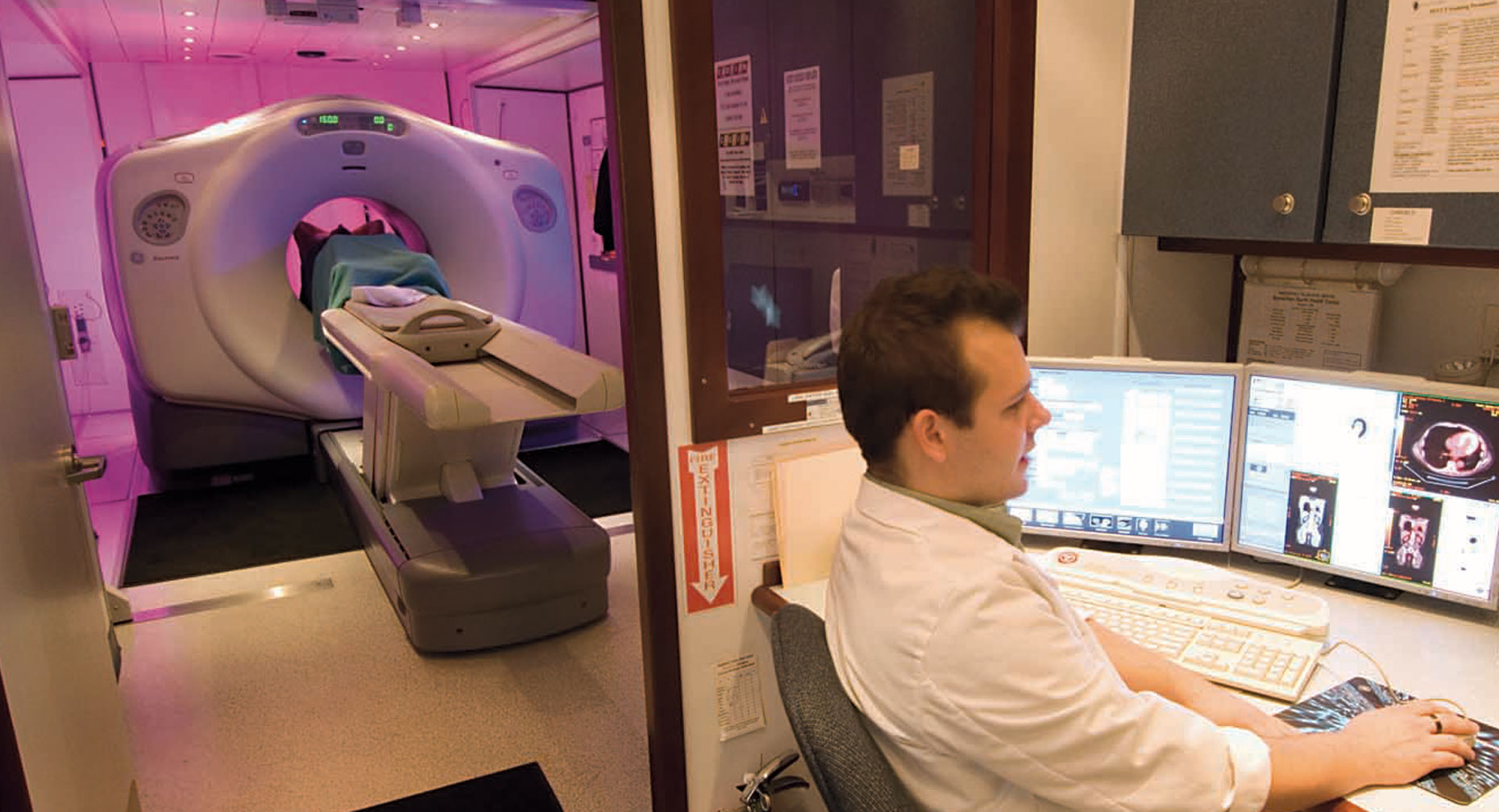Setting the Stage for Surviving Uterine Cancer

Answer a few questions and we'll provide you with a list of primary care providers that best fit your needs.
The more doctors know about your cancer, the better they can treat it. Uterine cancer is highly curable because of early diagnosis and advances in treatment.
If you have been diagnosed with uterine cancer, your doctor’s next step is to stage your cancer.
This process tells your care team whether your cancer has spread within your uterus or to another part of your body. Armed with this information, your doctors can work with you to create the best possible treatment plan.
What Determines Cancer Stage?
 A hysterectomy to remove your uterus is usually the first line of treatment and the best way to determine the stage of your cancer. Doctors can examine tissue from the uterus under a microscope to identify cancer cells. They also can tell whether cancer cells look similar to healthy cells and are slow-growing, low-grade tumors or if they look radically different, pointing to high-grade tumors that may spread quickly.
A hysterectomy to remove your uterus is usually the first line of treatment and the best way to determine the stage of your cancer. Doctors can examine tissue from the uterus under a microscope to identify cancer cells. They also can tell whether cancer cells look similar to healthy cells and are slow-growing, low-grade tumors or if they look radically different, pointing to high-grade tumors that may spread quickly.
Other tests that may help with staging include a pelvic exam, Pap test, X-ray, CT scan, MRI and/or PET scan.
Cancer specialists use one of two similar systems for staging cancer. The FIGO system of the International Federation of Gynecology and Obstetrics and the TNM (Tumor, Node, Metastasis) staging system of the American Joint Committee on Cancer (AJCC) both classify cancer based on:
- The extent of the tumor
- Whether the cancer has spread to nearby lymph nodes
- Whether the cancer has spread to other sites in the body
Stages of Uterine Cancer
The stages of cancer are similar for both types of uterine cancer — endometrial cancer of the inner lining of the uterus (which accounts for 95 percent of uterine cancer) and uterine sarcoma, which starts in the middle, muscular layer of the uterus.
Cancer spreads by growing from its original site into surrounding tissue, or by being carried to other body parts through the lymph system or through the blood. Here’s what the stages mean:
Stage 0: A very early stage of cancer found only in one layer of cells and confined to one place.
Stage I: Cancer is found in the uterus only and not in other parts of the body. Substages describe the extent to which the cancer has grown within the uterus.
Uterine cancer is highly curable because of early diagnosis and advances in treatment.
Stage II: For endometrial cancer, the tumor has spread into the connective tissue of the cervix, which lies at the base of the uterus.
For uterine sarcoma, the cancer is growing outside the uterus but is confined to the pelvis and has not spread to lymph nodes. Substages describe where the cancer has spread.
Stage III: For endometrial cancer, the tumor has spread beyond the uterus and cervix but is contained within the pelvis. Substages indicate where the cancer has spread, extending to some lymph node involvement.
The progression for stage III uterine sarcoma is IIIA: cancer is growing into abdominal tissue in one place only; IIIB: cancer is growing into two or more places in the abdomen; and IIIC: cancer may have grown into the pelvis or abdomen and has spread to nearby lymph nodes.
Stage IV: For stage IVA endometrial cancer, the cancer has spread to the rectum or bladder. In stage IVB, cancer has entered the lymph nodes in the groin area and/or spread to distant organs such as the bones or lungs.
Similarly, Stage IV uterine sarcoma means cancer has spread to the bladder or rectum in IVA, and to organs not next to the uterus, such as bones, lungs or distant lymph nodes in stage IVB.
Surviving Uterine Cancer
Your doctor may talk about your treatment results in terms of survival rates. The five-year mark is a common measure. It indicates the percentage of women with uterine cancer who live at least five years after their cancer diagnosis. It’s an estimate only, based on past numbers, and it doesn’t reflect results of better diagnosis and treatment that are happening constantly.
For uterine cancer, the five-year survival rate is 82 percent. The 10-year survival rate is 79 percent.
As cancer spreads, survival rates decline. So, it’s critical to pay attention to early signs and symptoms of uterine cancer.
Endometrial Cancer Survival Rates by Stage
From the National Cancer Data Base as published in the AJCC Staging Manual in 2010, based on people diagnosed between 2000 and 2002.
| Stage | Five-Year Survival Rate |
|---|---|
| 0 | 90% |
| IA | 88% |
| IB | 75% |
| II | 69% |
| IIIA | 58% |
| IIIB | 50% |
| IIIC | 47% |
| IVA | 17% |
| IVB | 15% |
Uterine Sarcoma Survival Rates by Stage
From the National Cancer Institute, based on an older staging system. Numbers are for five-year relative survival, which accounts for other causes of death in the same time period. Consult your doctor to determine numbers that best reflect your personal situation.
| Stage | Five-Year Survival Rate |
|---|---|
| I | 70% |
| II | 45% |
| III | 30% |
| IV | 15% |
Answer a few questions and we'll provide you with a list of primary care providers that best fit your needs.
Source: National Cancer Institute; American Cancer Society; Cancer.Net




